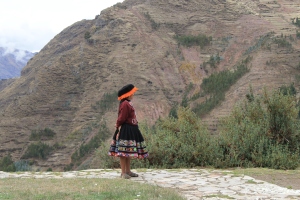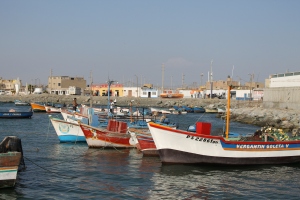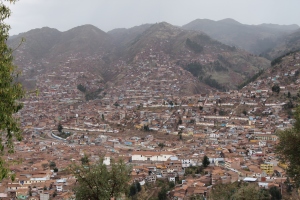Most of us pick up chicken from the store and use it as a constant part of our diet but do not think of where it is from. Many do not realize how drastically it impacts each citizen of the Eastern Shore by way of economy, employment, regulations, prices, pollution, laws and the health of the Bay. Without these operations many farmers would not be able to financially survive and therefore development may increase. On the contrast, pollution due to chicken litter would be greatly decreased and an increase in the health of the Bay would be quickly seen. Either way each new farm and new regulation indirectly affects almost every citizen of the Chesapeake area as well as many places throughout the country that receive the poultry.
There are many ethics surrounding this issue due to the environment and health of the Chesapeake. These can point fingers at the poultry industry as well as sewage treatment facilities, farms, development and many other contributors. What some forget is the intrinsic value of the chicken as a species within these operations. These chickens are tightly packed in houses without ever seeing the light of day or living outside. They are grown with water and food to get them to just the right size so they can immediately be killed and shipped off for consumption. Of course some chicken houses are much better kept than others but most have about the same lay out and ways of functioning. This biocentric view of these animals forces one to look at moral consideration of life outside of humans. Intrinsic value of these chickens would also force a decreased value for the livelihood for the many farmers of the area that are following the rules that the integrator sets out for them. This conflict has created a controversy within the poultry business that has caused many to question but few to speak out for change. The farmers claim they are following regulations, trying their best to keep up with pollution control and give the chickens a clean, stable and safe area. Environmental groups and animal activists push back, claiming these chickens are given no moral consideration and are sent through an assembly line life where they are grown like a crop. This is the line that divides the moral value of farmer’s livelihoods and that of chickens grown for poultry.
One possible course of action for this issue is to lessen regulations and laws and allow the farmers to produce more poultry for less cost. This possibility could increase employment and profit and stabilize the future of the farmers of the Eastern Shore. Stabilizing their future lessens the likelihood of major development on these farms and therefore keeps the area a rural, farming community. An increase in production could also lower the cost of poultry in the area as well as throughout the east coast. Aside from all the positives of this course of action, this plan would have huge negative impacts on the lives of chickens and the health of the Chesapeake Bay. With lower regulations, chicken litter pollution would skyrocket and pour into the tributaries with catastrophic affects to water quality. In this scenario there is also no moral consideration given to the quality of life of millions of chickens to be grown in this system.
Another possible course of action for this issue is moving all poultry industry out of the area, away from a sensitive estuary. Even with regulations, pollution is still poisoning the waters of the nearby tributaries and bay overall. The only way to stop this direct issue and help the Chesapeake to recover is to completely evacuate these large poultry operations from the area. While they will still create pollution in other areas it will have a much less drastic impact and will not be nearly as dangerous. The negatives to this solution are a huge job and economy loss for farmers across the Eastern Shore. Many would no longer be able to financially survive if this income was taken away from them. This could lead to many parts of these farmlands to be sold to developers, destroying the rural farming community base.
Lastly, the operations could be downsized with very strict animal rights regulations. This scenario would think first about the millions of chickens that are not being treated like living, feeling creatures. Because they do not have a voice to stand up for themselves this would give them rights as a species for basic ways of life. They would be able to more closely live in a natural habitat in which they could be outside and move around freely. With smaller operations more personal care could be given to the chickens and therefore hopefully more intrinsic value. The negatives to this solution include a huge change in infrastructure and way of raising these animals that will create a huge time and money expense for the farmers. This could dramatically increase the price in poultry and change the relationship between farmer and integrator.
I feel that the most morally acceptable alternative to poultry farming on the Eastern Shore is the last of the options listed, to downsize operations with strict regulations. I came to this conclusion by examining how many groups this change would affect most positively and what groups have the least amount of power. The chickens have no voice in the fact that they are being grown like crops and will never be outside for their short lives. By tightening regulations the Chesapeake Bay will also be less affected and poisoned by the excessive amounts of chicken litter. While this option is not completely ideal for farmers, the solution is more positive than completely moving the poultry industry out of the area. The group that this solution would hurt the most is the integrator company, forcing these large, monopolizing businesses to rethink and plan their strategies. I therefore believe that this solution is the most ethical way to deal with this industry. It would force each group to show moral consideration to the other people and animals affected by this huge industry.




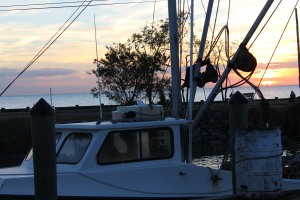





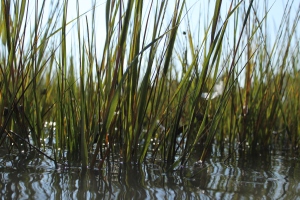
 We begin the day at the Jone’s Family Farm, a dairy farm known for their progressive environmental farming. The operation runs twenty four hours a day, with 1,200 heifers being milked three times a day. Before stepping foot off the bus we were informed that this farm would impress us with environmental technology ahead of almost any dairy operation in the country. Sean Jones gave us the tour of his family farm which produces 115,000 pounds of milk a day, their efficiency stemmed from some of the top genetics in the world. As we walked around the farm we watched the daily life of these cows, an efficient continuum of eating, laying down and being milked. We then were shown the proactive environmental measures put into place such as the lining of the manure lagoons and the phosphorus removal system. While all this technology seemed extremely progressive we were surprised to here that they are still struggling with keeping up with environmental regulations. If this farm is having difficulties keeping up with these new laws it is hard to imagine how other farms of the region are going to survive.
We begin the day at the Jone’s Family Farm, a dairy farm known for their progressive environmental farming. The operation runs twenty four hours a day, with 1,200 heifers being milked three times a day. Before stepping foot off the bus we were informed that this farm would impress us with environmental technology ahead of almost any dairy operation in the country. Sean Jones gave us the tour of his family farm which produces 115,000 pounds of milk a day, their efficiency stemmed from some of the top genetics in the world. As we walked around the farm we watched the daily life of these cows, an efficient continuum of eating, laying down and being milked. We then were shown the proactive environmental measures put into place such as the lining of the manure lagoons and the phosphorus removal system. While all this technology seemed extremely progressive we were surprised to here that they are still struggling with keeping up with environmental regulations. If this farm is having difficulties keeping up with these new laws it is hard to imagine how other farms of the region are going to survive. As I considered the idea of the intrinsic value of dairy heifers we pulled into St. Brigid’s Farm, owned and run by Judy Gifford and Robert Fry. The farm is substantially smaller, with only seventy cows milked at one time. These heifers are milked twice a day by Judy and live outside on rotated fields of green grass except during the winter. While just as healthy looking, these cows looked substantially less like part of a factory assembly line and substantially more like a living, feeling, individual animal. Judy petted the cows as she walked by and listed off many of their names to us. While of course St. Brigid’s was still a business who holds a goal of maximizing the efficiency of profit, there was also a clear love and intrinsic value towards the animals. Unfortunately, our country’s milk consumption will most likely never be able to be met by these much smaller, grass feed farms. After these visits I will much further appreciate the effort from the farmers and the cows that all goes into a glass of milk.
As I considered the idea of the intrinsic value of dairy heifers we pulled into St. Brigid’s Farm, owned and run by Judy Gifford and Robert Fry. The farm is substantially smaller, with only seventy cows milked at one time. These heifers are milked twice a day by Judy and live outside on rotated fields of green grass except during the winter. While just as healthy looking, these cows looked substantially less like part of a factory assembly line and substantially more like a living, feeling, individual animal. Judy petted the cows as she walked by and listed off many of their names to us. While of course St. Brigid’s was still a business who holds a goal of maximizing the efficiency of profit, there was also a clear love and intrinsic value towards the animals. Unfortunately, our country’s milk consumption will most likely never be able to be met by these much smaller, grass feed farms. After these visits I will much further appreciate the effort from the farmers and the cows that all goes into a glass of milk.